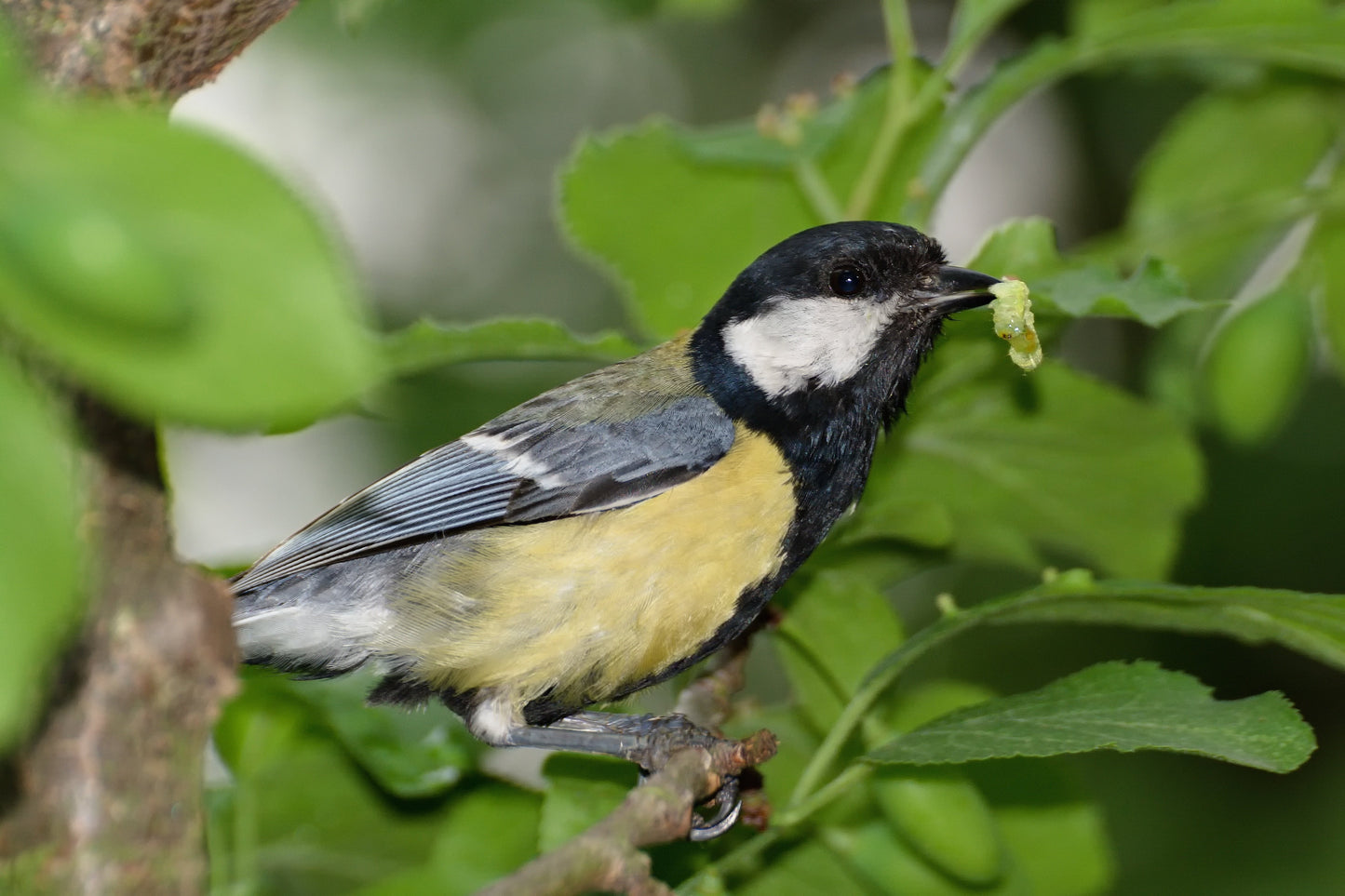
January 5, 2025
In Quebec, protected areas are primarily located north of the 49th parallel. However, the southern part of the province, where most of the land is privately owned, is home to the majority of our biodiversity1. Whether you have a balcony, a terrace, or a large garden, you have the power to transform these spaces into refuges for nature.
Planting native plant seeds gives our ecosystems a second chance. These simple and accessible actions support pollinators, enrich soils, and restore habitats for local wildlife. By combining our efforts, we can make a real difference.
Collectively, we have an unsuspected power to significantly impact the regeneration of our ecosystems and the state of biodiversity.
Impacts of Native Plant Seeds
Habitats for Local Wildlife
Native plants provide shelter, food, and breeding sites for local wildlife, including birds, insects, and mammals. They support interdependent relationships, such as the one between milkweed and the monarch butterfly. Indeed, over 90% of herbivorous insects rely on specific native plants for food and reproduction, just like monarchs cannot survive without milkweed.

Maintaining Trophic Networks2
Native plants produce the majority of food resources for herbivorous insects, such as caterpillars, which transfer energy from plants to animals.
14% of native plants generate 90% of the food for caterpillars, a key species in trophic networks. A single brood of chickadees can consume up to 10,000 caterpillars before leaving the nest! These caterpillars are only present if their host plants are available in the area.
Supporting Pollinators
Many native bees (between 15% and 60% of species) rely exclusively on the pollen of native plants to feed their larvae.
80% of plants and 90% of angiosperms3 depend on pollinators for reproduction.
Strengthening Soils and Natural Cycles
Native plants help control erosion and maintain the water cycle. They enrich and stabilize soils with their adapted root systems.
Limiting Invasive Species
By replacing non-native plants with local species, native plants help curb the spread of invasive exotic species that degrade ecosystems. Unfortunately, several invasive exotic species remain available as plants or seeds in the Quebec market.
Storing Carbon and Managing Climate
Native plants capture and store carbon in their tissues and in the soil, contributing to the reduction of greenhouse gases.
Creating Havens for Birds
Areas with 70% or more native plants support the survival of bird populations, such as Carolina chickadees, which rely on insects that feed on these plants.
Transforming Sterile Spaces into Viable Habitats
Planting native seeds, even in pots on small surfaces like balconies or terraces, can transform sterile spaces into viable habitats.
Indeed, an outdoor space without plants (or with only introduced plants that pollinators cannot use) is a sterile space for biodiversity, particularly for insects. By adding a few pots of native plants, it becomes a viable micro-habitat, as the flowers provide a food source for native pollinators. Urban environments in particular lack food sources for these pollinators.
Even a small balcony on the eighth floor with two pots of native plants can be transformed into a viable habitat! The more outdoor spaces, including balconies, incorporate potted native plants, the more biodiversity will thrive!
Collective Impact in Canada
In Canada, residential lawns cover a significant area, often underused from an ecological perspective. If part of these lands were redesigned to include native plants, we could transform thousands of hectares into refuges for biodiversity. Replacing just half of Canadian residential lawns with native plants would create an ecological network covering several million acres.

In Quebec, where over 80% of biodiversity is concentrated south of the 49th parallel, private lands represent a considerable opportunity to restore ecosystems. Local initiatives like the "LawnShare" project or ecological corridors demonstrate that it is possible to redesign residential spaces to have a large-scale positive impact.
Planting a native seed is a concrete step toward biodiversity and ecosystem resilience. Whether on a balcony, in a yard, or on a larger plot, every space can become a haven for local flora and fauna. By reintroducing these plants into our living environments, we contribute to a collective effort essential to countering species decline and strengthening ecosystem health.
Every action counts, and together, we can transform our landscapes into effective refuges for nature. Join this movement for a future where our spaces are teeming with life, diversity, and beauty. One seed at a time, let’s change the face of our ecosystems.
To Learn More…
- Discover our catalog for inspiration on native plant choices. Use the filters to personalize your selection based on your site's characteristics.
- Consult the planting guide (in French) written by the David Suzuki Foundation for the "LawnShare" campaign.
- Explore this guide on key plants that can be grown on a small scale or in pots. All are available in our catalog.
- Learn how to establish a wildflower meadow on your lawn to maximize its ecological potential.
- Register for free on the Homegrown National Park Biodiversity Map to join a network of spaces converted into habitats for biodiversity.
Share this article on your social networks and inspire others to act!
As entomologist Doug Tallamy says: "Living in harmony with nature is not just an option; it is now a necessity."
Do not underestimate the impact each individual can have. Collectively, one seed at a time, we can make a difference!
Sources:
- Deschênes, Fanny. (2022). La conservation de la biodiversité en terres privées au sud du Québec : Caractérisation des freins et leviers systémiques et recommandations pour une approche intégrée [Master’s thesis, Université de Sherbrooke]. Savoirs UdeS. https://savoirs.usherbrooke.ca/handle/11143/19241
- National Wildlife Federation. (2023, April). Plant 50% to 70% native—Benefit more wildlife. Blog NWF. https://blog.nwf.org/2023/04/plant-50-to-70-native-benefit-more-wildlife/
- Homegrown National Park. Tallamy, Doug. (n.d.). What’s the rush? [Conference]. https://homegrownnationalpark.org/whats-the-rush/

